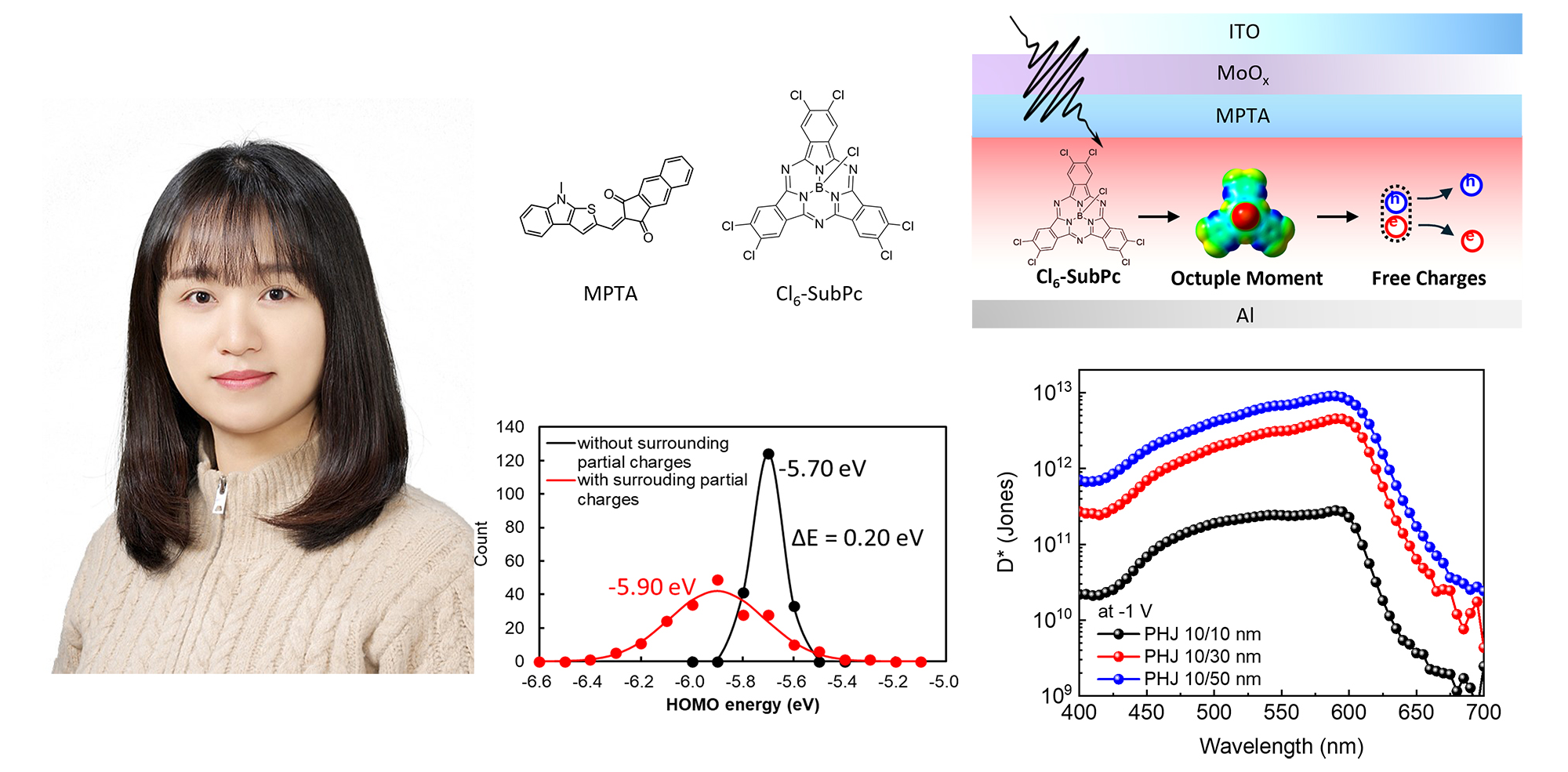연구/산학
PKNU Research 1000
| Park Song-Yi | Investigated characteristics of organic semiconductors for high-performance organic photodetectors | |||
| 작성자 | 대외협력과 | 작성일 | 2024-06-26 |
| 조회수 | 24589 | ||
| Park Song-Yi | Investigated characteristics of organic semiconductors for high-performance organic photodetectors | |||||
 |
대외협력과 |  |
2024-06-26 |  |
24589 |
Research on tripling the performance of organic photodetectors published in a Nature sister journal
- prof. Park Song-Yi from PKNU investigated characteristics of organic semiconductors for high-performance organic photodetectors

△ Image related to professor Park Song-Yi's research. Schematic of the organic semiconductor molecular structure, the organic photodetector device structure, and the photoelectric conversion process used in the research (top), simulation results of energy level separation in Cl6-SubPc thin films (bottom left), and photodetection capability results based on Cl6-SubPc thickness (bottom right).
New research results have shown that the performance of organic photodetectors, which are emerging as next-generation image sensors, can be improved by more than three times compared to existing technologies, attracting significant attention.
Professor Park Song-Yi from the department of physics at Korea Pukyong National University recently published research findings in the international journal <Nature Communications>, identifying the characteristics of organic semiconductor materials that can enhance the detectivity of organic photodetector devices and simplify the fabrication process.
Photodetectors are electronic devices that convert light into electrical signals. They are used in various applications, including camera image sensors and health monitoring sensors in wearable electronic devices such as smartwatches. Among these, organic photodetectors are gaining global attention as next-generation photodetectors due to their excellent light absorption capability, ease of bandgap tuning, and physical flexibility, utilizing organic semiconductors as the photoactive layer.
In this study, Professor Park revealed that the high octupole moment of the subphthalocyanine compound (Cl6-SubPc) plays a crucial role in generating free charges upon light irradiation.
Generally, in organic semiconductors, light irradiation creates electron-hole pairs called excitons, which do not easily separate into free electrons and holes at room temperature due to their high binding energy. To overcome this strong binding energy, bulk-heterojunctions, which mix two or more materials randomly, or planar-heterojunctions (PHJs), which layer two materials, are commonly used as photoactive layers in organic photodetectors.
According to professor Park's research, Cl6-SubPc molecules inherently exhibit energy level separation due to the electrostatic potential difference induced by their high octupole moment in the thin film. This energy level difference allows excitons to readily separate into free electrons and holes.
In the study, PHJ-based organic photodetector devices were fabricated using Cl6-SubPc as the main photoactive layer and MPTA as the auxiliary photoactive and hole transport layer, and the analysis of their optical and electrical properties resulted in a detectivity of ~1013 Jones at a wavelength of 590 nm. This performance is more than three times higher than that of previously reported PHJ-based organic photodetector devices.
Professor Park said, "Using materials with high octupole moments like Cl6-SubPc can enable the realization of high-performance photodetectors with a single material and single layer, significantly simplifying the fabrication process and potentially accelerating the commercialization of organic photodetectors."
As the first author of this study, she conducted international collaborative research with Imperial college London in the UK and the Samsung advanced institute of technology. Her research findings are detailed in the paper titled 'Octupole moment driven free charge generation in partially chlorinated subphthalocyanine for planar heterojunction organic photodetectors', which was published in the June 13 issue of Nature communications. <Pukyong Today>